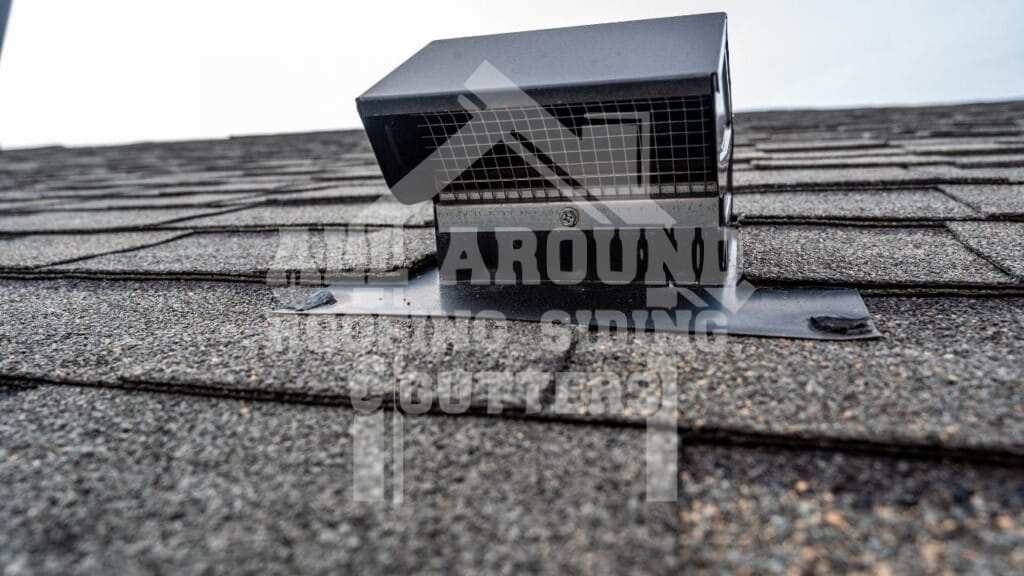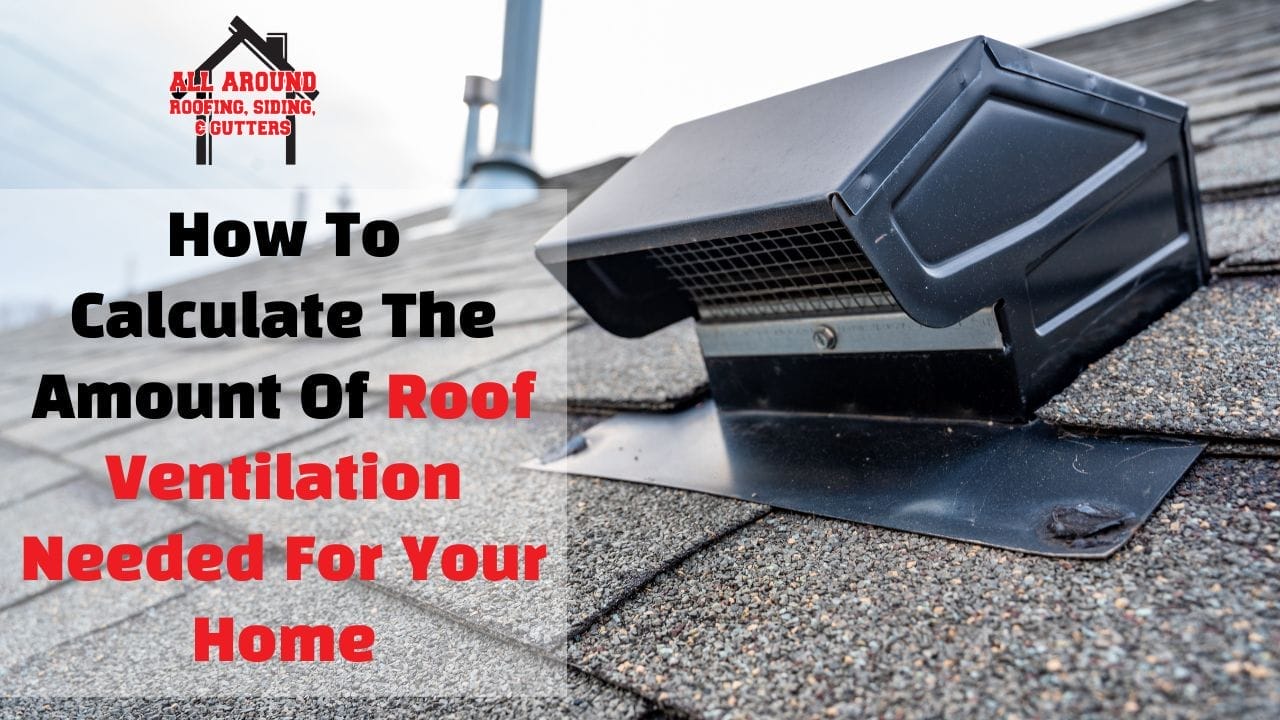The proper amount of roof ventilation keeps your home in good condition by stopping moisture build-up and maintaining proper airflow, ultimately saving you money on repairs. This blog post explains how to figure out the right amount of ventilation for your home and why roof ventilation matters.
Understanding Roof Ventilation
The process of bringing in new air and expelling hot air from your attic through intake and exhaust vents is known as roof ventilation. Roof ventilation prevents issues like mold growth, roof damage, and excessive energy bills by getting rid of excess heat, moisture, and pollutants from the air. This maintains a balanced and healthy home environment, creating a more comfortable and energy-efficient living area.
It’s important to understand how much ventilation your home needs because an inadequate amount can lead to a variety of problems, such as rot, structural decay, and premature deterioration.
What Is NFA?
The amount of open area in a roof vent that permits air to flow through is measured by the net free area (NFA). The required airflow, including intake and exhaust requirements, for the entire attic space is determined by this rating. This measurement determines which roof vents to install and how many.
A Step-By-Step Guide To Calculating How Much Roof Ventilation You Need

This calculation follows guidelines set by the International Residential Building Code (IRC), which suggests 1 square foot of NFA for around every 150 square feet of attic space.
There are a few exceptions to this rule, in which case the shortcut is to divide attic square footage by four instead of two.
There are many things to keep in mind when calculating roof ventilation. Here are some steps for how to calculate proper roof ventilation:
Step 1: Determine the NFA required based on the square footage of the attic or roof space
The required NFA can be calculated by dividing the attic’s total square footage by 150. For instance, if the attic is 2,000 square feet, the NFA needed is 2,000 / 150 = 13.3 square feet.
Step 2: Calculate the required amount of intake and exhaust vents based on the NFA
Divide the square footage needed by two to find the amount of intake and exhaust ventilation needed (13.3 / 2 = 6.65 square feet). Then calculate that amount into square inches by multiplying the total by 144 (6.65 x 144 = 957.6 square inches) and rounding to the nearest whole inch (958 square inches).
For a 2,000-square foot attic, you would need 958-square inches of both intake and exhaust ventilation.
How To Calculate If You Have Enough Roof Ventilation
To check if your roof has enough ventilation, consider these steps:
1. Measure Attic Size:
Find the square footage of your attic by multiplying its length and width.
2. Calculate Minimum Ventilation with the 1/300 Rule:
For a balanced attic ventilation system, 1-square foot of ventilation for every 300-square feet of attic floor space is recommended. This ventilation should be evenly split between intake and exhaust.
3. Check Ventilation System Size:
Ensure your exhaust system matches your home’s needs. Place intake vents under the eaves and exhaust vents near the roof’s peak.
4. Look for Signs of Proper Ventilation:
Issues like mold, paint blisters, or wood rot might indicate poor ventilation.
5. Consult a Professional Roofing Contractor:
If you’re uncertain about your attic’s condition or ventilation system, seek advice from a qualified roofing contractor.
To simplify these calculations and prevent issues, you can also use apps designed for roof ventilation calculations. Tools like the Owens Corning ventilation calculator can help you quickly determine the right amount of ventilation for your specific roof dimensions.
Factors to Consider When Calculating Roof Ventilation
When calculating how much roof ventilation you need in a location like Dayton, Ohio, several factors need to be considered to ensure optimal performance and efficiency. These factors include:
> Size and Layout of the Attic Or Roof Space
The kind and quantity of ventilation needed are dependent on the size and design of the attic or roof space. More powerful intake and exhaust vents might be needed in larger spaces to keep the interior at ideal temperatures.
> Climate Factors such as Temperature and Humidity
The local climate and weather patterns also have a big impact on how much ventilation a roof needs. Dayton, Ohio experiences hot summers and chilly winters, so for the best indoor conditions and to avoid moisture-related problems, homes in this area might require more ventilation.
> Building Codes and Standards for Roof Ventilation
Local building codes might specify a certain amount of vent area needed for each square foot of attic floor. To prevent potential problems related to insufficient ventilation, it is imperative to confirm that your ventilation system meets these standards.
Common Roof Ventilation Mistakes To Avoid
To make sure your roof ventilation works as intended, be mindful of these common mistakes:
- Blocking Vents by Accident:
Take care not to block vents when installing insulation or storing items in the attic. Blocked vents have the potential to cause roof damage and higher energy bills by trapping hot air.
- Selecting the Wrong Ventilation Type:
Choose the right type of vents for your home. The performance of the ventilation system may be impacted by using the incorrect kind, such as choosing box vents over ridge vents.
- Using the Wrong Amount of Ventilation:
Determine how much airflow your attic needs. Issues can arise from using too little or too much, and a healthy roof requires finding the ideal balance.
- Incorrect Calculations:
Make sure to calculate the right number of vents for your roof. Incorrect calculations can result in an unbalanced or ineffective ventilation system. Follow the correct steps and consider your home’s specific needs to avoid this mistake.
- Not Balancing Intake and Exhaust Vents:
Have an equal amount of intake and exhaust vents for a balanced system. This helps with proper airflow and avoids issues like mold growth and moisture damage.
- Not Considering Climate or Weather Conditions:
Different places need different types of ventilation. For instance, areas with more humidity might need more exhaust vents to stop moisture build up.
- Neglecting to Follow Building Codes:
Stick to local regulations for ventilation as breaking these rules could mean fines or legal trouble.
By dodging these mistakes and following the right guidelines, homeowners can have a ventilation system that works well and keeps their homes in top condition.
Conclusion
Knowing how to calculate roof ventilation is essential for a comfortable and energy-efficient home. By balancing ventilation, thinking about your local climate, and using our simple guide, you can ensure proper ventilation for your home. If you need help calculating the amount of ventilation you need, contact All Around Roofing, Siding & Gutters.
Contact Us For All Your Roof Ventilation Needs
At All Around Roofing, Siding & Gutters, our goal is to offer the best and most professional roofing services in Dayton, OH. With over 40 years of combined experience, we understand the ventilation needs of homeowners in the area. Our extensive experience makes us the top choice for roofing and exterior services in Dayton, OH.
With an A+ rating from the Better Business Bureau and recognition from the National Roofing Contractors Association, All Around Roofing, Siding & Gutters is a company you can trust. Call us at (937) 902-2839 for the best roofing services.


